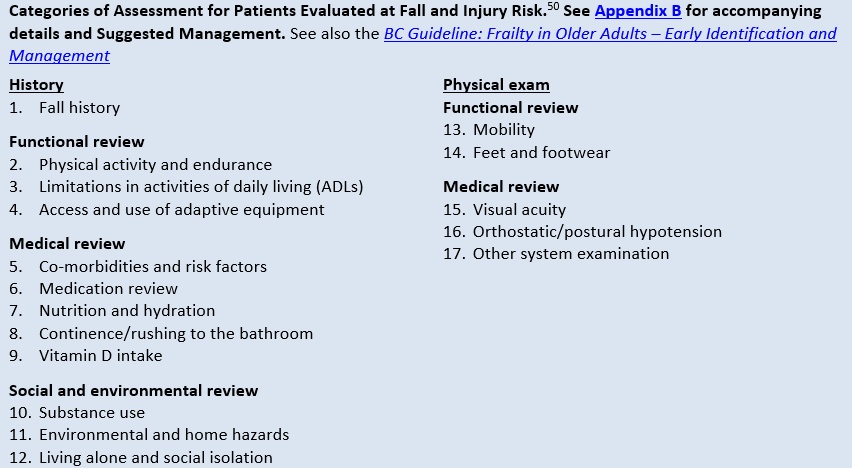Some Known Facts About Dementia Fall Risk.
Table of ContentsThe Buzz on Dementia Fall RiskThe Greatest Guide To Dementia Fall RiskHow Dementia Fall Risk can Save You Time, Stress, and Money.Our Dementia Fall Risk Ideas
A loss risk analysis checks to see just how most likely it is that you will fall. The analysis normally includes: This includes a collection of inquiries regarding your general health and wellness and if you've had previous drops or troubles with equilibrium, standing, and/or walking.STEADI includes testing, assessing, and treatment. Interventions are recommendations that might minimize your risk of falling. STEADI includes three steps: you for your danger of succumbing to your threat factors that can be boosted to try to avoid drops (for instance, balance troubles, impaired vision) to reduce your danger of falling by making use of effective techniques (as an example, supplying education and resources), you may be asked a number of questions consisting of: Have you fallen in the previous year? Do you feel unstable when standing or walking? Are you fretted about dropping?, your copyright will examine your stamina, balance, and stride, using the complying with fall evaluation devices: This test checks your stride.
Then you'll take a seat again. Your provider will certainly check the length of time it takes you to do this. If it takes you 12 seconds or more, it may imply you are at higher danger for a loss. This examination checks toughness and equilibrium. You'll rest in a chair with your arms went across over your breast.
The positions will certainly get more challenging as you go. Stand with your feet side-by-side. Move one foot halfway ahead, so the instep is touching the big toe of your various other foot. Relocate one foot completely in front of the other, so the toes are touching the heel of your other foot.
The Main Principles Of Dementia Fall Risk
The majority of drops occur as an outcome of numerous contributing factors; as a result, handling the danger of falling starts with identifying the factors that add to drop threat - Dementia Fall Risk. A few of one of the most pertinent risk variables include: Background of previous fallsChronic medical conditionsAcute illnessImpaired stride and balance, reduced extremity weaknessCognitive impairmentChanges in visionCertain risky medications and polypharmacyEnvironmental aspects can also increase the threat for drops, including: Insufficient lightingUneven or harmed flooringWet or unsafe floorsMissing or damaged handrails and get barsDamaged or poorly fitted equipment, such as beds, wheelchairs, or walkersImproper use assistive devicesInadequate guidance of individuals residing in the NF, including those that show aggressive behaviorsA effective fall risk administration program needs a detailed scientific analysis, with input from all participants of the interdisciplinary group

The treatment plan should also include interventions that are system-based, such as those that advertise a risk-free setting (ideal illumination, handrails, get bars, etc). The performance of the treatments need to be evaluated regularly, and the treatment plan revised as required to show modifications in the autumn danger assessment. Applying an autumn risk administration system using evidence-based finest method can decrease the prevalence of falls in the NF, while restricting the potential for fall-related injuries.
The smart Trick of Dementia Fall Risk That Nobody is Discussing
The AGS/BGS guideline recommends evaluating all adults aged 65 years and older for loss risk yearly. This screening is composed of asking clients whether useful reference they have actually dropped 2 or more times in the previous year or sought medical attention for a loss, or, if they have not fallen, whether they really feel unsteady when strolling.
People that have dropped once without injury ought to have their balance and gait evaluated; those with stride or balance abnormalities must receive additional analysis. A history of 1 autumn without injury and without gait or equilibrium problems does not call for further evaluation beyond continued yearly fall threat screening. Dementia Fall Risk. An autumn threat evaluation is needed as part of the Welcome to Medicare assessment

About Dementia Fall Risk
Documenting a falls history is among the top quality indicators for fall prevention and monitoring. A crucial part of risk evaluation is a medicine testimonial. A number of classes of drugs raise loss threat (Table 2). copyright medications particularly are independent predictors of drops. These drugs have a tendency to be sedating, modify the sensorium, and impair balance and stride.
Postural hypotension can usually be relieved by reducing the dose of blood pressurelowering medications and/or quiting medications that have orthostatic hypotension as a negative effects. Use above-the-knee assistance pipe and copulating the head of the bed boosted might additionally lower postural reductions in high blood pressure. The suggested elements of a fall-focused checkup are displayed in Box 1.

A Yank time better than or equal to 12 seconds recommends high loss threat. Being not able to stand up from a chair of knee height without utilizing one's arms suggests raised loss danger.